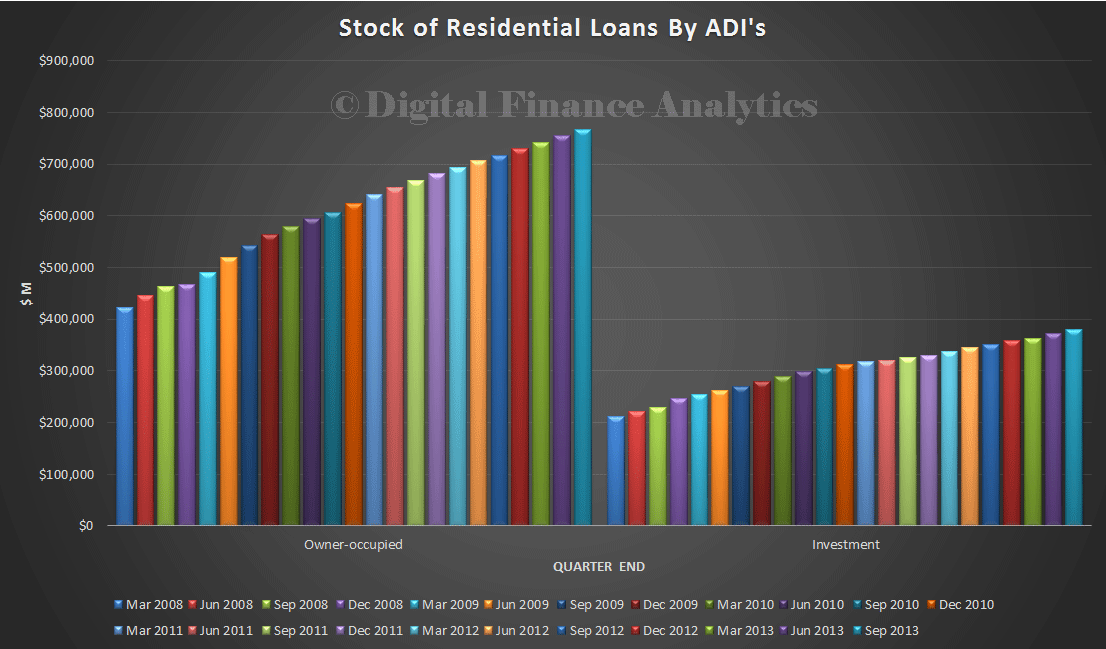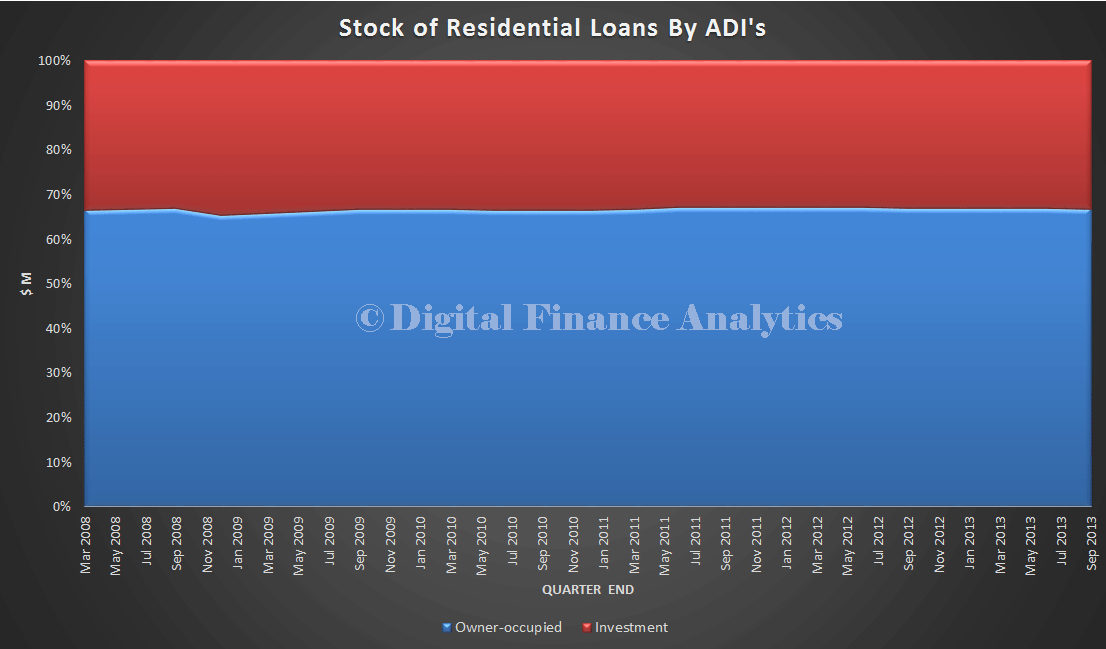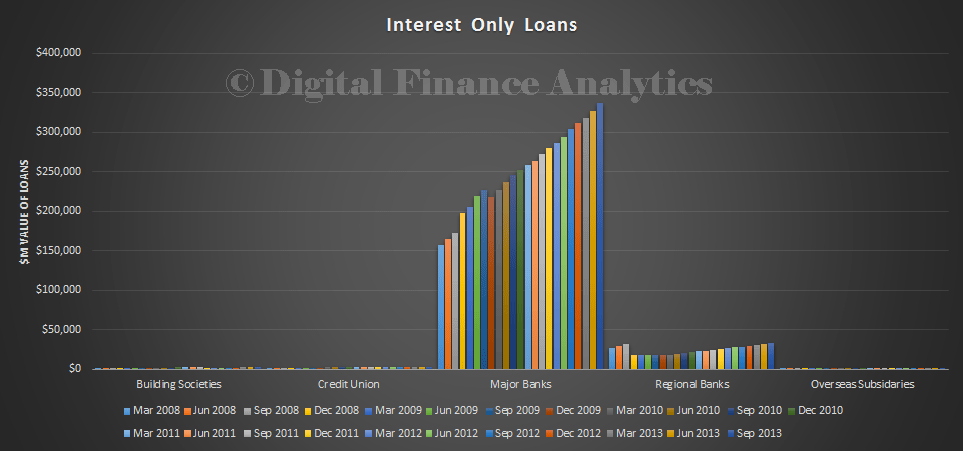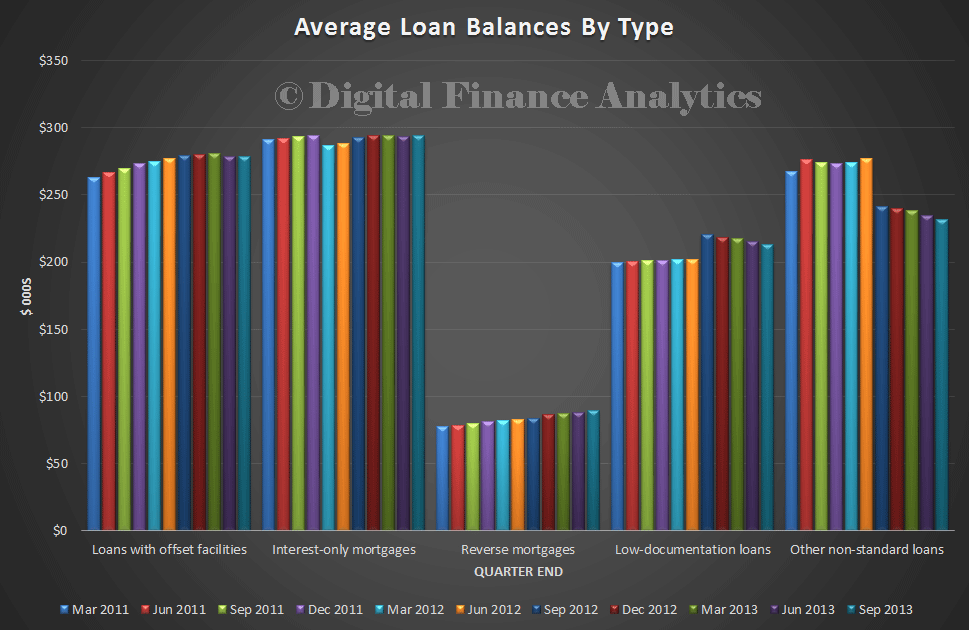Cross-posted from DFA blog.
There is an interesting story to be told about how investors are tapping into the property market. First from our household survey we know that investors are widely spread across household groups. Down Traders for example, are quite likely to add an investment property into the mix when they release capital. However, there are about 993,000 households who only hold investment property, 2% of which are held within Superannuation. Households in this segment will own one or two properties, but do not consider they are building an investment portfolio. Around 95% of households expect prices to rise in the next 12 months, 67% of households expect to transact within the next year, 44% will need to borrow more, and 38% will consider the use of a mortgage broker.
Compare these with portfolio investors, households who maintain a basket of investment properties. There are 180,000 households in this group. The median number of properties held by these households is eight. Most households expect that house prices will rise in the next 12 months (98%), and 71% will transact in the next 12 months. Many will borrow more to facilitate the transaction (78%), and 43% will use a mortgage broker.
Digging into why they are transacting now, it is clear from our survey that appreciating property values, tax benefits, low finance rates and the prospect of better returns than deposits are driving their decisions:

Many investors were looking at the same type of property as first time buyers, and in many cases, investors will win because of easier access to finance. (There are two other small factors in play, first, there is a rise in overseas investors tapping into the local market, and property held within a superannuation fund is also rising – these merit separate more detailed analysis, which I won’t cover now.)
However, looking at the recent APRA data we see that the stock of both owner-occupied and investment loans has been growing for the last few quarters. Stock of course includes new loans added in a quarter and existing loans less loans repaid.

Interestingly, the mix between investment and owner-occupied loan stocks has remained static over the past decade (this was a surprise as I would have expected to see a shift towards investors, but not so). In March 2012 32.7% were investment loans, in September 2013, it was 33.1%:

Individual lender types have seen some change in mix, with regional banks and building Societies giving up investment loans to the major banks.
There has been quite a rise in the value of interest only loans being written (which APRA does not split out to investment loans) but DFA modelling suggests about 70% are investment loans.

We also find that the average loan balance for interest only loans is higher:
So what does all this tell us? Investors are on the march, encouraged by the prospect of rising house pieces, tax breaks, and the prospect of better returns than from deposits. Banks are happy to lend, and will offer interest only deals, allowing investors to leverage, to maximise their tax benefit. This is creating significant momentum in the market, squeezing out many first time buyers, and lifting prices. It is likely to continue carried along by the current lower than average interest rates and the generous tax breaks. Incidentally, a quick calculation suggests that the only real return comes from expected capital appreciation, as the net costs of renting the property, even after tax are on average neutral.


